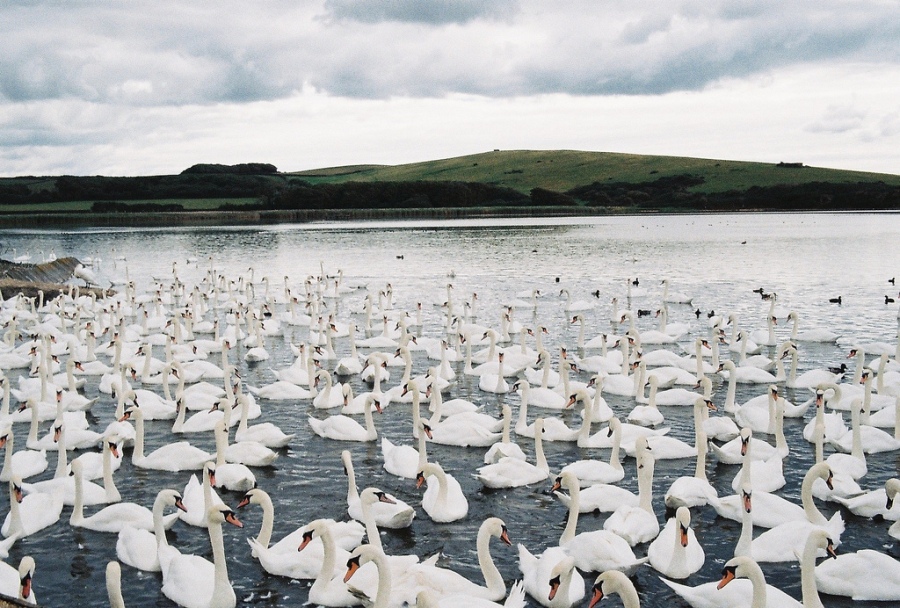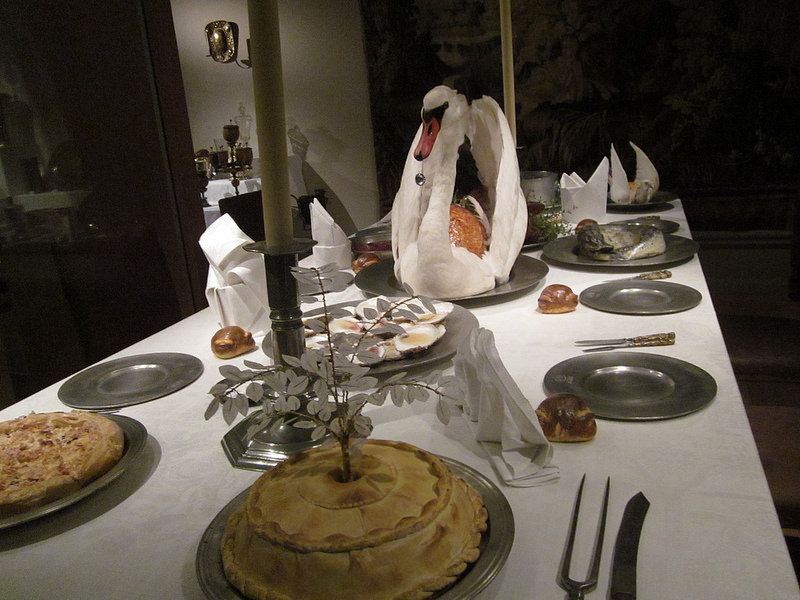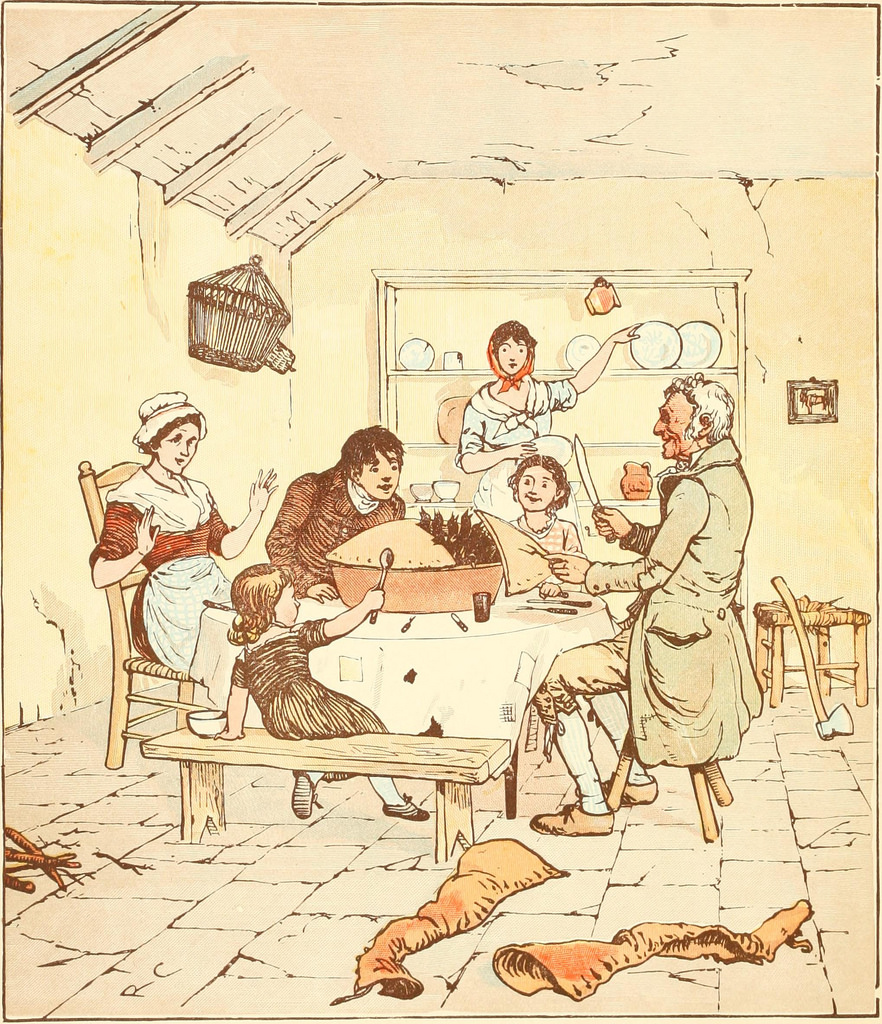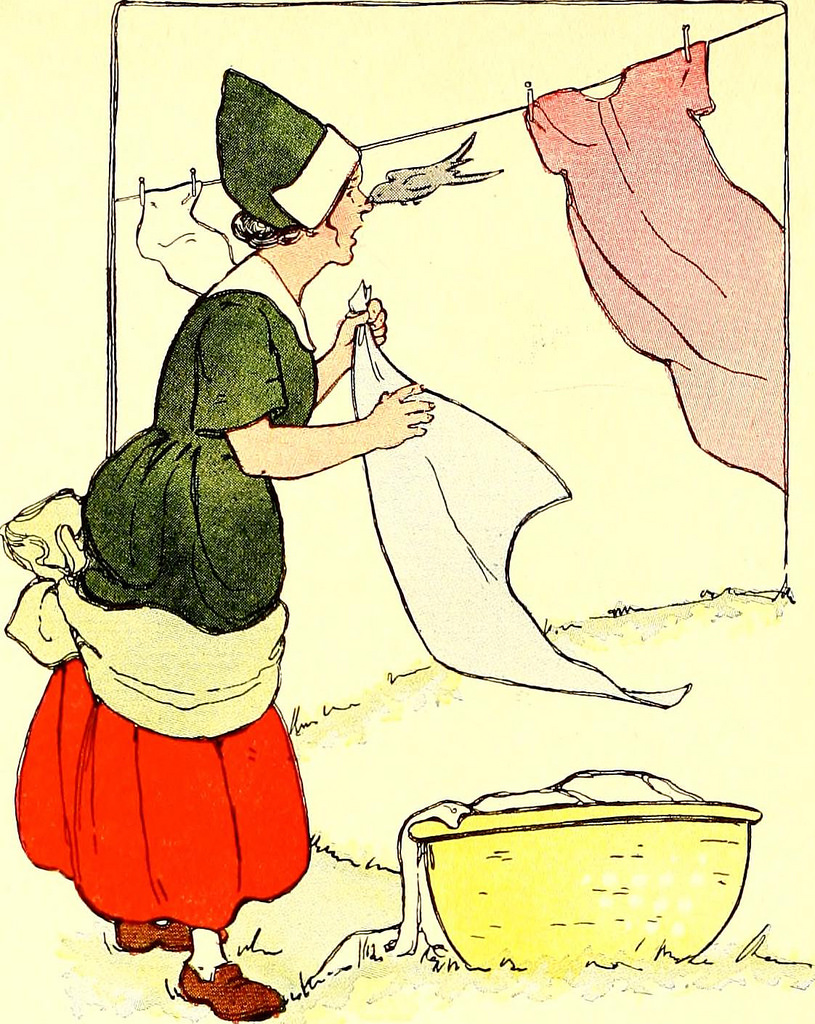It’s that time of year again, our resident female swan is ‘feasting’ – building up her reserves ready for when she sits on the nest. She has become very persistent in asking for food and is incredibly grumpy when it is not forthcoming as and when she demands it…. She will often run at me and try to aim a peck or even a wing swipe, to show her disapproval at being made to wait. I’ve told her, on more than one occasion, that she ought to think herself lucky that this is the 21st Century or she may well have found herself on the dinner table….

In truth, swan would have been reserved for the tables of Royalty and high nobility. People, in Mediaeval times especially, ate what was available to them and within their social standing. Peasants would have had a diet consisting mainly of bread, porridge, eggs, cheese, nuts, berries and what ever fruit and vegetables they could grow themselves. Meat was, on the whole, seldom eaten, maybe the occasional rabbit, pork or on special occasions, goose or chicken. Hens were more useful as egg layers than to provide meat….
Upper classes enjoyed far more variety, not only due to their wealth but also to their passion for hunting with birds of prey. As well as rabbit and hare, it could in fact be said, if it had feathers it was to be considered ‘fair game’…. Anything from sparrow to peacock could appear on the menu….

In this current age of so many bird lovers, (a trip to the local garden centre will show how big a market there is for wild bird feed), it is almost incomprehensible that our feathered friends once graced the tables of households across the land. Thrushes, finches, starlings were all eaten….the utmost prize would have been a young cuckoo that had just fledged. Heron, crane and crow were all considered delicacies and were favoured by Royalty. Stork, cormorant, bittern, puffin, bustard, gull, guillemot, lark and woodcock would all have been served as part of a meal….
Peacocks were domesticated and prized for their plumage, they were very much a status symbol. Although not particularly tasty and quite tough, they were still served at banquets, in order to impress. To make the meat more palatable, the birds were likely to have been ‘hung’ for a day or two, by the neck with their feet weighted down. To serve, they would usually have been ‘re-dressed’. This means that once the bird had been cooked the plumage would have been replaced. This was the case with any impressive bird, male pheasants, swans, partridge and the like. In the instance of the peacock, the tail would have been fanned out in a glorious display….

Capons (castrated cockerels) and pheasants were purposely ‘fattened up’ – making them expensive, so were a luxury only for those who could afford them….
In England, (unlike Europe), duck was not popular for every day consumption, it was more likely to be eaten at feasts and on special occasions. Sometimes domestic ducks were kept but mainly wild ducks were hunted. The feathers were a bonus as these were prized for bedding….
Geese were also raised for their feathers, as well as for their meat and grease…. Most dwellings kept these noisy, hissy birds…. In England, goose was the traditional choice for Michaelmas and Whitsuntide, (both minor Christian festivals – not so widely observed in recent times); in Europe, goose was a popular choice at Christmas….
Because of the popularity of falconry, partridge, pheasant and quail were all common place. Pheasant, particularly, was highly valued because the meat was considered very flavoursome….

Wood pigeons, rock doves and turtle doves were all domesticated for food in Mediaeval Europe, again being reserved mainly for the upper classes. They were very often roasted or made into pies….
Crane and heron were hunted by the aristocracy with their hawks and falcons. Both were popular for banquets. Sometimes, heron would be purposely bred. Swans had been domesticated for centuries. It was actually the young swan that was eaten, the meat of the adult being too tough. The young birds would have been removed from their parents at about three months old, to be raised and fattened up on barley, until they were somewhat obese. Swan apparently tastes more like duck than goose and it lacks the tough ‘beefiness’ of goose…. As soon as their white feathers appeared, at about seven months, the young swans were slaughtered….
In 1482, during the reign of Edward IV, it became legally defined that anyone caught killing a swan, without the permission of the Crown, could be imprisoned. This is how it came to be that the Monarch owns the majority of the UK’s swans. Occasionally, throughout history, the Throne has given ‘rights’ to other establishments to own swans, currently there are three of such establishments: The Dyers Livery Company, a historic guild of dyers dating back to the 12th Century, (but now more noted for its charitable work); The Vintners Livery Company, a historic guild of wine merchants, gaining its first charter in 1363; and the Ilchester family, the Ilchester Estate being where the Abbotsbury Swan Sanctuary is located…. Each establishment identifies its own birds, nowadays by ringing them but in days gone by, notches were carved into the swan’s beak…. Any un-ringed swan is automatically assumed as belonging to the Crown….

The Queen is at liberty to give swans away to who ever she sees fit; for example, in 1967 she gave six as a gift to Ottowa, Canada, to celebrate its 100th anniversary and Canada’s ties with the UK.
Swans are protected by the Wildlife and Countryside Act of 1981, it prohibits the intentional killing or harming of a swan. To do so could result in being arrested; in 2006 a man in Llandudno, Wales, was imprisoned for 2 months for the killing of a swan. Today the crime is referred to as a felony; the old term for the killing and eating of swans by unauthorised persons was ‘swanage’….
Technically, the Royals are still entitled to consume swan meat; as are the fellows of St. John’s College of Cambridge – however, it is unlikely that it will be appearing at any banquets any time soon….unlike those of yesteryear, where a swan would have been considered the jewel in the crown….

Anyone fancy slivers of swan, poached in saffron and peaches? Or how about a Swan Roast….
Take: one woodcock, place inside a pigeon….place pigeon inside a partridge….partridge inside pheasant….inside a chicken….mallard….duck….goose and finally, a swan…. Roast for many hours, then re-dress in swan plumage : to really impress, at this stage gild the feathers with gold; serves approximately 30 people….
The correct term for stuffing animal into animal is ‘engastration’ – sounds appetising, doesn’t it?! It goes back to the Roman times, possibly even before….
The lavish displays of food at these banquets were very much part of the entertainment. Another great source of delight was the ‘live pie’. As children, we were all familiar with the nursery rhyme ‘Sing a Song of Sixpence’; reputedly about such a pie….
Sing a song of sixpence a pocket full of rye;
Four and twenty blackbirds baked in a pie;
When the pie was opened the birds began to sing;
Oh, wasn’t that a dainty dish to set before the King?
The King was in his counting house counting out his money;
The Queen was in the parlour eating bread and honey;
The maid was in the garden hanging out the clothes;
When down came a blackbird and pecked off her nose….

A pie would have been made by baking the pastry first without a filling; the crust would have been thick and would have risen to form a ‘pot’ shape. The top would have been cut off and live birds added and then the lid put back on…. The pie would then have been presented at the table and the lid removed, causing much merriment…. (It’s no wonder the maid in the rhyme had her nose pecked off….revenge!)….

Cooks became more competitive; all kinds of animals got added to pies….frogs, rabbits, dogs….even dwarfs, who would pop out and recite a poem! It was reported that a band of musicians actually emerged from one pie….
The first recipe books appeared in England during the 1500s, (before that time recipes would have passed on verbally from mother to daughter). One recipe that may have appeared in such a book has been adapted here for anyone wishing to try out a Mediaeval recipe for themselves….
Mediaeval Game Bird Stew
6 rashers of bacon, cut into large pieces
3 cloves of garlic, chopped
2 small pheasants or 4 quail or 1 chicken
Handful of coarsely cut mushrooms
Teaspoon of roasted, chopped hazelnuts
1 bottle of ale
3/4 cup of water
3 crumbled bay leaves
salt and pepper
6 slices of whole grain bread
In a heavy pan or flame proof casserole dish, fry the bacon with the garlic. Add the bird(s) and brown on all sides. Add nuts and mushrooms, cook for a few minutes and then add ale, water, bay leaves, salt and pepper. Bring to the boil, cover and simmer for 2 hours or until tender and the meat falling from the bone.
Remove from heat, take the birds out of the liquid. As the juice left in the pan begins to cool, skim off any fat that forms with a slotted spoon. Remove the meat from the bones of the bird(s) and return meat to stew. Reheat gently, then serve on the slices of bread, ensuring it is saturated with juices….
Now, does anyone have any idea how big a pot I’d need to make swan soup…..?


A great post, Hazel! Full of interest, variety and humour, as well as information. Most enjoyable.
LikeLiked by 1 person
Thank you Carolyn – and I am loving Fortune’s Wheel… fabulous
LikeLike